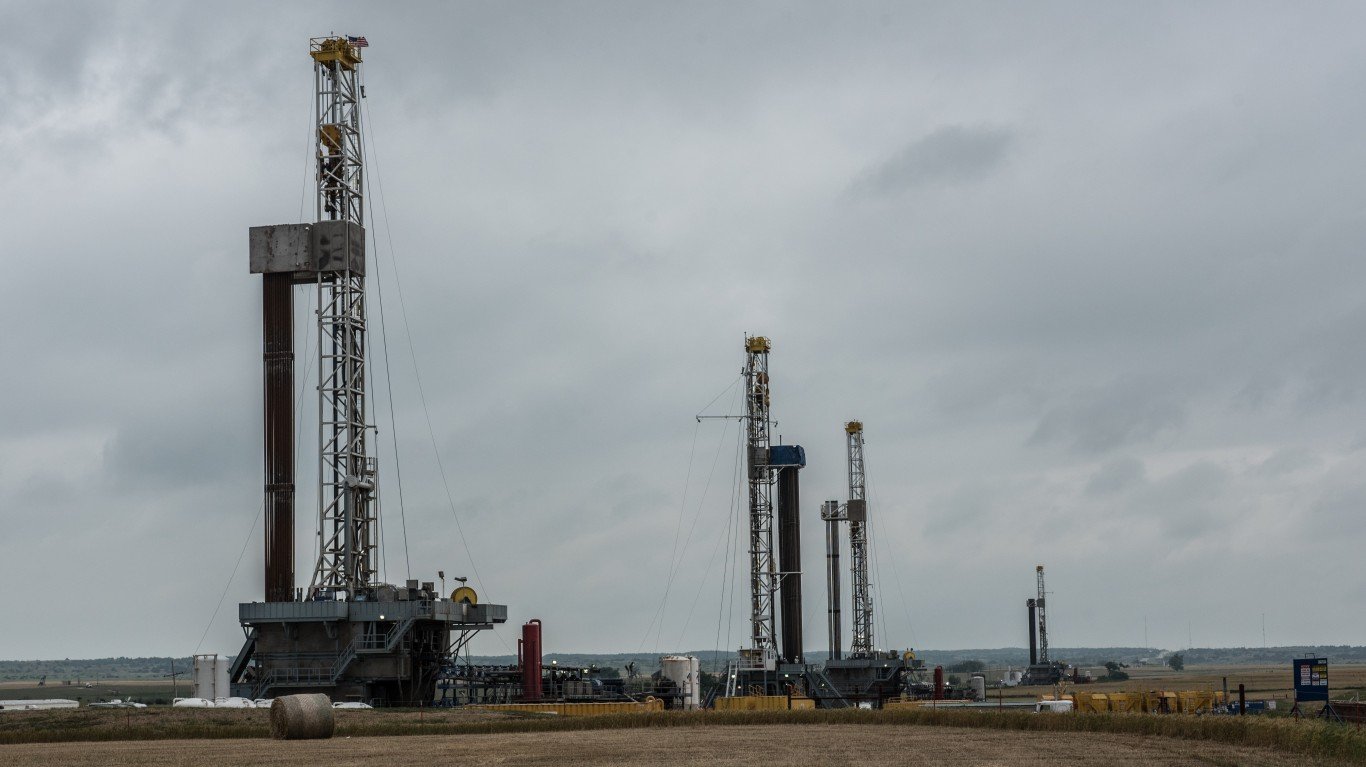

Crude oil futures traded up about 2% Monday morning following a Washington Post report that U.S. Secretary of State Mike Pompeo will announce today that as of May 2, the Department of State will end its sanctions waivers for countries currently importing oil from Iran. The eight affected countries are China, India, South Korea, Japan, Italy, Greece, Turkey and Taiwan.
Supply cuts imposed by the Organization of the Petroleum Exporting Countries and its partners, including Russia in a group of producing nations known as OPEC+, combined with conflict in Libya have been pushing prices higher. West Texas Intermediate (WTI) crude for front month delivery is up 40% since the beginning of the year.
Most of the shortfall in OPEC+ production was expected to be made up in rising U.S. production, but lower onshore drilling levels have been adding to worries about supply rather than easing those worries.
Last Thursday, oilfield services giant Schlumberger Ltd. (NYSE: SLB) reported in-line first-quarter results, but shares sank nearly 4% on CEO Paal Kibsgaard’s remarks on the conference call:
First quarter oil production in the international markets outside OPEC was down 400,000 barrels a day versus Q1 of 2018 and 900,000 barrels a day versus Q1 of 2017. While the underlying decline in the aging production base in key oil-producing countries such as Norway, UK, Brazil, and Nigeria has so far been offset by new project startups, the need for a stronger supply-side response is becoming increasingly evident.
Kibsgaard expects new investment from Mexico, Angola, Indonesia and China to help boost the company’s top and bottom lines. Problems remain in North America:
[I]n North America land, the higher cost of capital, lower borrowing capacity, and investors looking for increased returns suggest that future E&P [exploration & production] investments will likely be at levels dictated by free cash flow. We, therefore, see land E&P investment in North America down 10% in 2019.
In addition to the lower investments, increasing technical challenges from well interference, step-out from core acreage and limited further growth in lateral length and proppant per stage point to a more moderate growth rate in the U.S. shale oil production in the coming years.
Worries about how long the boom in production from the Permian Basin can last have surfaced on and off for the past several months, but when the CEO of a $63 billion company is concerned maybe it’s time to look more closely at all those rosy outlooks for U.S. production.
Halliburton Co. (NYSE: HAL), another services firm, reported first-quarter results Monday morning and is a bit more sanguine. CEO Jeff Miller noted:
[F]irst quarter activity levels in North America were modestly higher compared to the first quarter of 2018, and we experienced pricing headwinds throughout the quarter. We believe the worst in the pricing deterioration is now behind us. For the next couple of quarters, I see demand for our services progressing modestly.
Investors are reacting as though this were a ringing endorsement of future growth, pushing Halliburton shares up more than 4% in Monday’s premarket and even taking Schlumberger shares a bit higher.
But Halliburton’s reported revenue was flat year over year in the quarter, and adjusted earnings per share were down by nearly 80%. Analysts have forecast the company’s full-year earnings at $1.36 per share, down from $1.90 a year ago. Revenues are forecast to fall by about 1.6% for the year.
None of this seems to support a 4% share-price bump. Perhaps investors are counting on new drilling in the Permian Basin, forgetting Kibsgaard’s comments on well spacing, movement away from sweet spots and limited headroom for longer laterals for horizontal drilling.
If Kibsgaard is right, U.S. production may not rise as fast at most people have projected. Combine that with an end to waivers on buying oil from Iran and oil prices have nowhere to go but up. As do pump prices.
Soon we should expect to hear from the president that Saudi Arabia and OPEC+ need to pump more oil because prices are rising. But the administration’s own actions are a big part of why prices have been rising.
One sort-of positive note: as prices rise, more drilling in the United States becomes profitable, and now that the big oil companies like Exxon and Chevron have staked out huge acreage positions in the Permian Basin, the constraints on access to capital have eased somewhat. Will it be enough to support both new drilling and higher dividends, as Kibsgaard suggested? We’re about to find out.
Thank you for reading! Have some feedback for us?
Contact the 24/7 Wall St. editorial team.
 24/7 Wall St.
24/7 Wall St.


